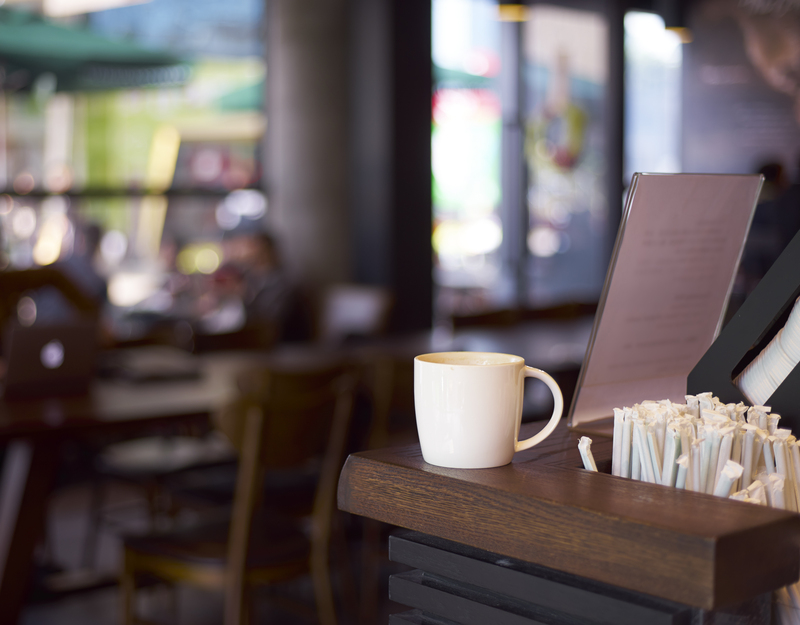Innovative Ways to Streamline Packaging and Cardboard Disposal
Discover how businesses and individuals can enhance their packaging workflows and manage cardboard disposal more efficiently with the latest innovations and sustainable practices.
Introduction to Modern Packaging and Cardboard Waste Challenges
In today's fast-paced marketplace, packaging and cardboard disposal present increasing challenges for both businesses and households. The rise of e-commerce, subscription services, and global trade has brought about larger volumes of cardboard waste than ever before. Waste management companies are reporting higher intake levels, while landfill space continues to dwindle.
If you're frustrated with overflowing bins, complicated waste sorting, or costly disposal processes, there's good news: innovation is paving the way for smarter, greener, and more cost-effective packaging disposal solutions. In this comprehensive guide, we'll highlight cutting-edge techniques, emerging technologies, and actionable tips to streamline packaging and cardboard waste management--helping you save time, money, and the environment.

1. Advanced Cardboard Compaction and Baling
One of the most effective strategies for managing excess cardboard is through compaction and baling. These solutions are especially beneficial for businesses generating large volumes of packaging waste.
Why Compact and Bale?
- Reduce Volume: Baling compresses cardboard, allowing more material to fit into a smaller space, cutting disposal costs and reducing pick-up frequency.
- Optimize Storage: Compacted bundles are easier to stack and store, freeing up valuable space in backrooms or waste areas.
- Increase Recycling Value: Sorted, baled cardboard is more attractive to recyclers and can fetch a better price.
Latest Baling Machine Innovations
- Smart Baling Systems: IoT-enabled balers now offer fill-level notifications, remote diagnostics, and automatic log reporting--maximizing uptime and minimizing manual oversight.
- Energy-Efficient Designs: Newer machines come equipped with variable power usage, reducing operational costs and environmental impact.
- Safety Improvements: Interlocked doors, automatic shut-offs, and anti-jam technology reduce workplace injuries and interruptions.
Tip: Consider leasing a baler if you're unsure about upfront costs--many suppliers offer rental and servicing packages.
2. Reusable and Returnable Packaging Systems
Shifting from single-use cardboard boxes to reusable packaging systems can drastically cut down waste while streamlining your shipment operations.
How They Work
- Durable plastic, metal, or reinforced cardboard containers are used for shipping goods.
- Recipients empty the packages and return them for cleaning and reuse.
- Companies establish closed-loop supply chains, reducing costs and environmental impact over time.
Popular Applications & Benefits
- E-commerce and Retail Fulfillment: Some online retailers offer "returnable boxes," which customers can fold and send back for reuse.
- Inter-company Logistics: Manufacturers are switching to collapsible totes and pallets for internal product handling and transport.
- Enhanced Branding: Durable, branded packaging can reinforce a company's image and commitment to sustainability.
Case Study: Several leading fashion brands now utilize reusable garment bags, slashing cardboard waste and boosting customer loyalty through eco-friendly packaging.
3. Smart Packaging Design for Minimal Waste
Intelligent packaging design is a fundamental strategy for reducing cardboard use right at the source. Innovative companies are investing in design teams and technologies to minimize materials while maintaining protection and presentation.
Design Principles for Streamlined Packaging
- Right-Sizing: Use digital measuring tools to create packaging that fits items snugly, drastically cutting excess cardboard and filler materials.
- Modular Configurations: Invent multi-functional boxes and inserts that adjust to various product sizes, eliminating the need for multiple box types.
- Easy-To-Disassemble: Design boxes and inserts so they can be quickly separated for recycling or reuse.
Latest Trends in Eco-Friendly Materials
- Mushroom-based Packaging: Grown from organic waste and mycelium, these materials are fully compostable and can replace traditional cardboard in some uses.
- Corrugated Alternatives: New "honeycomb" and air-cushion structures use less material while offering superior protection.
- Water-Based Inks and Adhesives: Make packaging easier to recycle, reducing sorting costs and contamination.
Tip: Use QR codes on boxes to link customers to disposal instructions or local recycling information, increasing packaging recovery rates.
4. Automated Sorting and Separation Technologies
For facilities dealing with large volumes of mixed waste, automated sorting systems are revolutionizing the cardboard disposal process.
Key Technologies in Smart Sorting
- Optical Scanners: Use machine vision to identify and separate cardboard from plastics, metals, and other packaging materials.
- Robotic Arms: Powered by AI, these sorters rapidly pick and place cardboard items onto the right conveyors, increasing throughput and accuracy.
- Magnetic and Air Separation: Quickly diverts contaminants, improving the purity of recovered cardboard for recycling.
Facilities using these systems report up to 50% increases in recycling efficiency, lowering their overall waste management costs.
5. Digital Tools and Apps for Waste Tracking
The integration of digital tools into waste management is a significant leap forward in streamlining packaging disposal at both business and community levels.
Waste Tracking Apps
- Inventory and Disposal Logs: Businesses can monitor how much packaging enters and leaves their premises, identifying waste hotspots and optimization opportunities.
- Pickup Scheduling: Automated reminders and booking tools help align collection times with actual waste generation, preventing overflows and missed pickups.
- Recycling Rewards: Some platforms offer incentives or gamification, encouraging users to recycle more cardboard and packaging materials.
Benefits of Digital Waste Management
- Data-Driven Insights: Pinpoint inefficiencies and track progress toward waste reduction goals.
- Enhanced Compliance: Keep records for environmental reporting and regulatory requirements.
- Community Engagement: Encourage responsible disposal practices at a neighborhood or city-wide level.
Tip: Look for apps compatible with your local waste management provider or recycling facility for seamless integration.
6. Local Partnerships and Circular Economy Models
Joining forces with local businesses, recycling centers, and non-profits can open up new avenues for effective cardboard packaging disposal and resource recovery.
Examples of Community-Driven Solutions
- Shared Baling Facilities: Small businesses pool resources to install and operate a communal baler, reducing individual costs and landfill impact.
- Pickup Co-ops: Groups coordinate cardboard collection days, attracting more favorable rates from recyclers.
- Donation and Upcycling Networks: Excess, clean packaging is distributed to local schools, art organizations, or startups for creative reuse.
Did you know? Some cities have pilot programs that let residents drop off sorted cardboard at local farmers' markets or community centers for direct recycling.
7. Education and Employee Training Programs
A well-informed team is your greatest asset in achieving efficient packaging and cardboard disposal.
Key Steps for Training Success
- Regular Workshops: Teach staff about material separation, baling procedures, and contamination risks.
- Clear Signage: Use distinct visuals and multilingual instructions at points of disposal or collection.
- Continuous Improvement: Gather feedback, review waste stream data, and adapt procedures for ongoing efficiency gains.
Organizations implementing robust education programs consistently report lower contamination rates and higher recycling rates for cardboard and packaging waste.
8. Government and Industry Support Programs
Don't overlook local and federal incentive schemes designed to improve packaging disposal outcomes.
Helpful Subsidies and Grants
- Equipment Rebates: Municipalities or utility companies sometimes offer rebates for baling or compaction machines.
- Recycling Grants: Funding is available for business-led pilot projects in closed-loop packaging or new recycling technologies.
- Technical Assistance: Industry associations often provide free audits or consultations to help optimize packaging workflows.
Stay informed about evolving extended producer responsibility (EPR) regulations, which increasingly hold businesses accountable for the life cycle of their packaging materials.

9. Creative Upcycling and Secondary Uses
Rethinking packaging as a resource, rather than waste, opens doors to creative and practical solutions outside conventional recycling.
Innovative Upcycling Ideas
- DIY Furniture and Storage: Cardboard can be transformed into functional shelving, organizers, or event decor.
- Children's Art and Play: From forts to costumes, clean cardboard boxes offer endless potential for safe, imaginative play.
- Composting: Corrugated cardboard (without plastic coatings or heavy inks) makes a superb carbon-rich "brown" in home or community composting piles.
By promoting upcycling, businesses and households alike can keep packaging out of landfills and spark eco-friendly creativity.
Conclusion: The Future of Packaging and Cardboard Disposal
As the world shifts toward more sustainable packaging and waste management, adopting innovative cardboard disposal methods is crucial for success. From smart balers and modular box designs to digital apps and community partnerships, there have never been more ways to cut costs, boost efficiency, and protect the environment.
By embracing these innovations and sharing best practices, you'll not only streamline your own operations but also contribute to a cleaner and more circular economy.
Take action today: Audit your packaging flow, invest in one new technology, and reach out to partners in your area. With each small step, you'll make a big impact in the drive for efficient and eco-friendly packaging and cardboard waste disposal.
Frequently Asked Questions (FAQ)
- What's the best way to dispose of bulk cardboard packaging?
Baling and selling to recyclers is usually most efficient for bulk quantities. For smaller volumes, flat-packing and curbside recycling is effective. - Are there grants available for upgrading packaging disposal systems?
Yes, check with your local government, utility provider, or industry bodies for available rebates and grants tailored to waste reduction initiatives. - How do I ensure packaging waste is properly recycled?
Remove contaminants, keep cardboard dry, and follow the sorting guidelines of your local recycling provider.
For more information on streamlining packaging and cardboard disposal, subscribe to our newsletter or consult local experts in sustainable waste management!